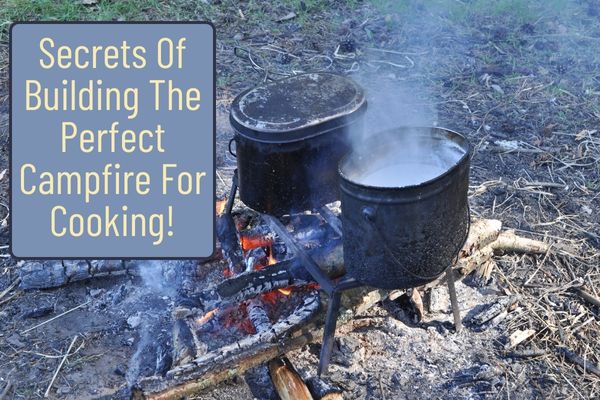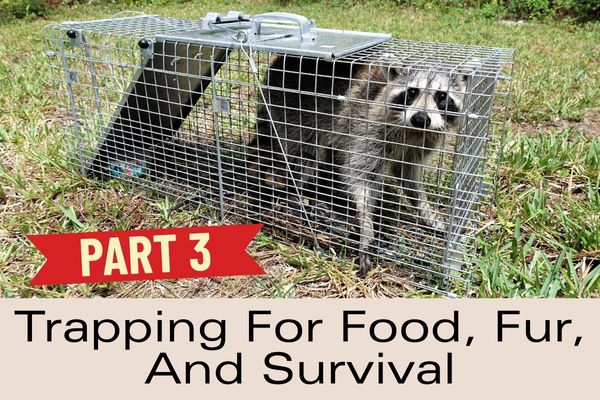Many preppers live in urban areas and that can present its own set of unique challenges.
Urban areas are more packed with people and therefore there’s more chance of encountering risky situations. For example, during emergencies, one dangerous type of situation urban dwellers are more likely to encounter is riots.
One strategy for dealing with safety in urban environments is known as the Grey Man.
This idea – the Grey Man Strategy – can help you and your loved ones blend in to the environment. Sometimes the best way to escape danger is to blend in … being invisible by not being noticed.
So – picture yourself in an urban setting with people upset, angry, and desperate. Maybe these people want food … water … supplies … or money. If you or your loved ones are noticed, you could possible become a target.
Blend in:
When in an urban setting and in a potentially dangerous situation, your goal is to appear unremarkable and unnoticeable. So –
>> Dress in neutral, unbranded and non-tactical-looking clothing. Grey, navy and tan all work well.
>> Avoid bright colors, camo or something that makes you stand out identify you as someone worthy of notice.
>> If you’re carrying a backpack, do so in a manner that minimizes it. Backpacks (and what’s insdie them) might be viewed as something worth stealing.
Moving Through Crowds Undetected:
In today’s attention economy, we signal our value by standing out. In order to survive in the chaos of a system breakdown, we may need to blend it, not stand out. Being noticed can draw questions, aggression, and worse. So …
:: Match the pace and demeanor of the crowd.
:: Avoid sudden movements or changes in direction that draw eyes.
:: Maintain relaxed body language, neither timid nor assertive.
Staying in this state allows us to stay under the radar not merely of bad actors, but also authorities focused on those “acting out.”
Avoiding Confiscation by Authorities:
In the case of martial law, police or military may confiscate supplies for redistribution or restrict civilian movement. Thus, it’s important to conceal high value items, such as water filters, radios and cash, in hidden pouches or plain containers.
It’s often smart to keep a decoy wallet with a small amount of cash while hiding the true source of cash on your person. Appearing as a normal, unprepared civilian means that authorities have no reason to stop you or confiscate your supplies.
Conceal Your Preparedness Level:
If other people know you have food, water or gas, you could become a target. Consider these tips to help you remain unnoticeable:
>> Don’t discuss your prep in public … even casually.
>> When eating or drinking, do so away from desperate people.
>> Use unmarked containers for water and food distribution to avoid signaling abundance.
Protecting Route and Destination Security:
The following concept is a bit less intuitive. What is Route and Destination safety?
In the psychological haze of disaster, people follow those who look confident. Thus, to evade a stampede in the direction of your quiet hideaway, follow these rules:
:: Avoid obvious navigation gestures like checking maps repeatedly.
:: Memorize your route beforehand if possible.
This will prevent other groups from following your path to abundance, and avoid potential conflicts for resources.
Minimize Theft of Vehicle/Gear:
As outlined before, any visible signifiers of value are prone to attract negative attention. And when trying to avoid notice, all attention is negative attention. Thus, it’s vital that we:
>> Keep gear out of sight under seats or blankets.
>> Remove preparedness stickers or decals (e.g. “Molon Labe,” gun brands, 4×4 overlanding stickers) that indicate valuable contents.
By making your car look like every other civilian vehicle, you can help avoid break-ins.
Passing Checkpoints without Incident
In situations approaching martial law, authorities may set up checkpoints to control movement, and those who appear suspicious may be detained or questioned.
>> Present yourself with polite compliance, minimal talking, no jokes or challenges.
>> Avoid tactical dress or suspicious bulges that suggest weapons or contraband.
>> Keep visible ID and minimal items accessible to avoid rummaging through bags.
Appear cooperative and unremarkable, encouraging quick clearance.
Reduce Confrontation:
Stressful situations cause strangers to look for scapegoats or perceived threats. Don’t be either. Here’s how:
>> Avoid direct eye contact or staring at others.
>> Maintain neutral facial expressions; neither fearful nor challenging.
>> Don’t display signs of extreme preparedness like gas masks unless necessary.
Simply put, when people do not notice you, you’ll be able to move more freely.
Evacuating with Family or Group Safely
Thus far, we’ve been talking about your solo expedition, assuming your family is waiting for you somewhere like a bugout location. But what if you have your family or group with you? New variables enter. The best way to minimize variables is to:
>> Dress all members in neutral, unbranded clothing.
>> Coach children to stay calm, quiet, and close.
>> Divide supplies among group members to avoid large visible bags.
This way your family avoids scrutiny by looking like just another evacuee family.
Remaining Invisible During Supply Runs
If you have already made it to your destination, chances are it’ll only be a matter of time before you need to refuel, search for water, or seek food/additional supplies. To hide your scarce resources, remember to:
>> Blend in with the local dress code and condition (if everyone is dusty or wet, don’t look pristine).
>> Carry only what you can conceal easily … no large shopping bags or gear.
>> Leave and return at varied times to avoid predictable patterns.
With these techniques, you reduce the risk of ambush or neighbors realizing you have valuable resources.
Grey Man’s Psychological Techniques:
Adopt a “Don’t Be Here” Mindset:
A helpful saying to remember is: Don’t be here at all. In the situations we’ve outlined above, you now know about what to wear, and how to appear, but what about how to think?
The answer is that your internal dialogue should be centered around the following philosophy:
>> I don’t belong here.
>> I should leave quietly.
This can be easier said than done. Here’s how to implement it.
>> Avoid emotional engagement. Stay neutral, neither happy, nor fearful.
>> Don’t visibly react to external circumstances unless you need to.
Control Your Facial Expressions
Let’s get a bit deeper into the facial aspect. This all hinges around the fact that your face is a billboard for your inner state. Here’s how you can prepare:
>> Practice a relaxed and neutral resting face in a mirror.
>> Avoid tight lips (signals anxiety) or smirking (signals arrogance).
>> Suppress microexpressions of disgust or judgment when observing others.
In effect, you’re preventing others from seeing you as emotionally reactive or judgmental, thus avoiding challenges or conversations.
Calibrate to Social Energy Levels
Matching the group energy avoids standing out. Here’s how to implement that:
>> If the crowd is loud, maintain quiet but don’t look fearful; if they’re tense and silent, don’t hum or speak.
>> Adjust your pace to the group. Moving too fast signals fear or urgency; too slow signals aimlessness.
Now, you’re just part of the background flow.
Maintain Confident, Non-Aggressive Posture
It’s been said that predators smell fear. And aggression invites challengers. Avoid both in your outward appearance.
>> Stand straight with your shoulders relaxed.
>> Avoid crossing your arms defensively or puffing your chest out aggressively.
>> Keep your hands visible and calm (not fidgeting or in fists).
This will have you read as competent but unthreatening, reducing targeting.
Speak Less, Listen More
Talking draws attention, especially if your voice differs in accent, volume, or tone.
>> Limit words to essentials. In questions, answer briefly without offering extra detail.
>> If approached, use polite, flat responses that do not invite follow-ups.
Less verbal exposure prevents giving away your origin, knowledge, or preparedness level.
Hide Emotional States
Fear, anger, or confidence can all draw attention if displayed overtly.
>> If afraid, breathe through your nose, drop shoulders, and unclench your jaw to remove visible tension.
>> If angry, pause before speaking, and keep tone flat.
>> If confident, soften your voice to a calm neutral tone.
Emotional invisibility prevents both sympathy-seeking and confrontation.
Practice Pretexting
If you do manage to get on the radar of an adversary of any kind, have a cover story to conceal sensitive information.
>> Prepare simple narratives: “I’m just heading home,” “Looking for my brother,” “Trying to find a working pharmacy.”
>> Keep them short, unembellished, and delivered calmly.
This helps reduce suspicion from authorities or looters if you are challenged.
Mirror Local Norms
People trust those who seem like them.
>> Observe how locals greet, speak, stand, and gesture, then subtly mirror it.
>> Match levels of eye contact culturally appropriate for the group.
>> This helps reduce the perception of you as an outsider or threat.
Keep these principles in mind to help keep you safe during an emergency. They’ll help keep you more prepared, especially if you find yourself in an urban environment.




